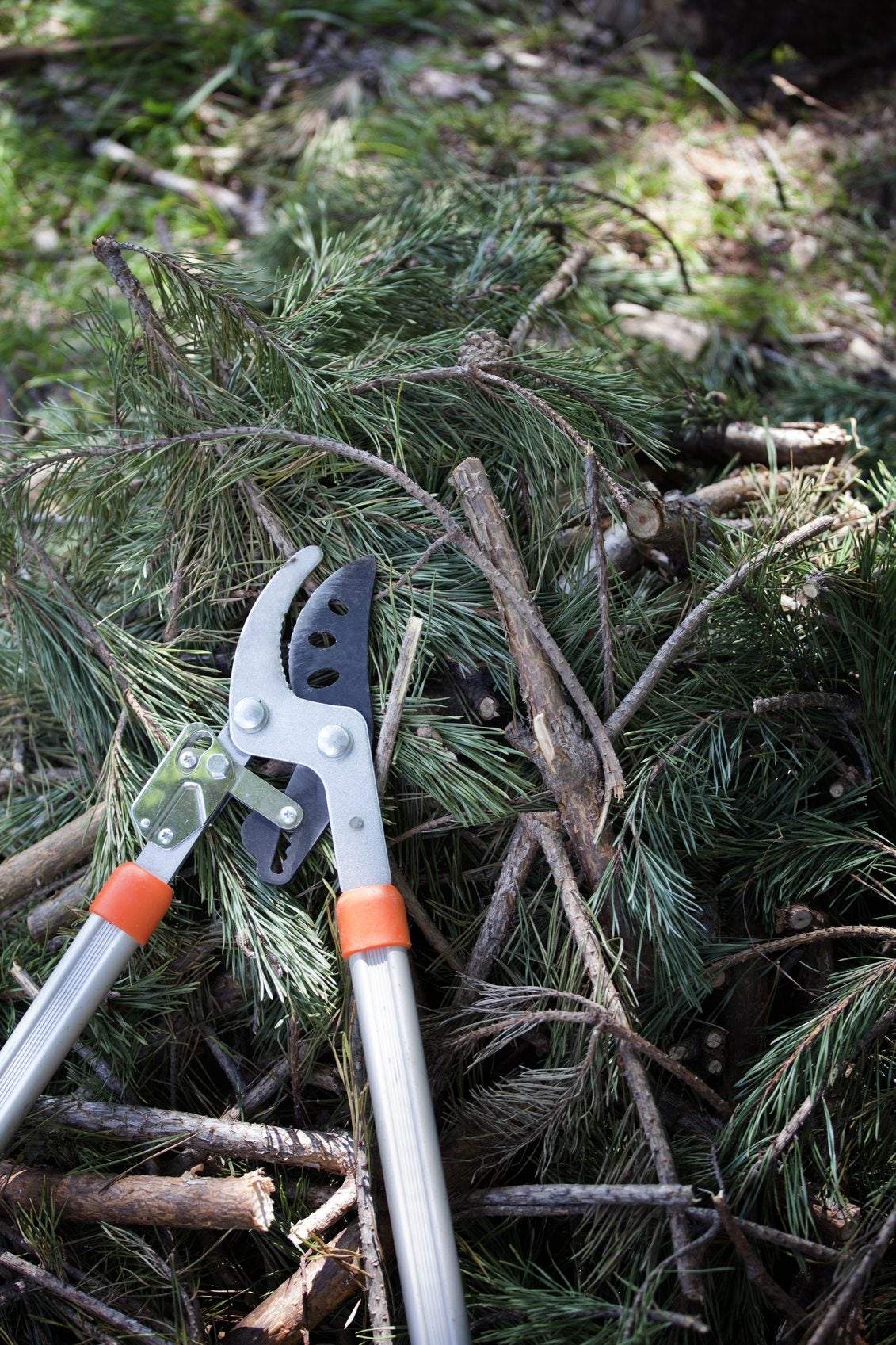Pine Tree Pruning: How And When To Prune Pine Trees


We treasure pine trees because they remain green throughout the year, breaking the winter monotony. They seldom need pruning except to correct damage and control growth. Find out when and how to prune a pine tree in this article.
When to Prune a Pine Tree
Pines are among the easiest trees to maintain because they have a naturally neat shape that seldom needs correction. About the only time you’ll find yourself pruning pine trees is to correct damage from severe weather or vandalism. There’s also a pruning technique you might want to try if you’d like to encourage a compact growth habit. The best time for pruning pine trees is in spring, but you can prune to correct damage any time of year. Although it’s best to take care of broken and mangled branches right away, you should avoid pruning in late summer or fall whenever possible. Cuts made late in the season won’t have time to heal before winter weather sets in. Wound dressing and paint don’t provide winter protection for pruning cuts. Give a pine tree a dense, compact growth pattern by pinching back the candles, or new growth tips, in spring. Break them of at about the middle by hand. Cutting them with shears clips into the needles, causing them to turn brown. Trimming pine trees to shorten the branches is usually a bad idea. Cutting into the woody part of a branch stops the growth of that branch and, over time, it will look stunted. It’s best to remove damaged branches completely.
Pine Tree Pruning How To
When you remove a branch, cut all the way back to the collar, or thickened area near the trunk. If you are cutting a branch that is more than an inch (2.5 cm.) in diameter, don’t make one cut from top to bottom, as this may strip the bark down the trunk when the branch breaks free. Instead, move about a foot (31 cm.) out from the trunk and make a cut from the bottom about halfway through the width of the branch. Move out another inch or two (2.5-5 cm.) and make a cut all the way through the branch from top to bottom. Cut off the stub flush with the collar. Make sure your pine tree doesn’t have any branches that rub each other. This situation is rare in pines, but when it happens, one of the branches should be removed to protect the health of the tree. Rubbing causes wounds that provide entry points for insects and disease.
Gardening tips, videos, info and more delivered right to your inbox!
Sign up for the Gardening Know How newsletter today and receive a free copy of our e-book "How to Grow Delicious Tomatoes".

Jackie Carroll has written over 500 articles for Gardening Know How on a wide range of topics.
-
 Looking For Plants To Give You The Soft And Fuzzies? Try These 5 Fuzzy Leaf Plant Options
Looking For Plants To Give You The Soft And Fuzzies? Try These 5 Fuzzy Leaf Plant OptionsLovers of texture, drama, silver foliage and tactile plants will adore these special sensory garden additions. These fuzzy leaf plant options will leave you all aglow
By Susan Albert
-
 Get Ready For A Summer Of Hummers! Grow These Full Sun Hummingbird Plants and Flowers
Get Ready For A Summer Of Hummers! Grow These Full Sun Hummingbird Plants and FlowersIf you’re lucky enough to enjoy a sunny backyard, make sure you are maxing out on your pollinator opportunities and grow these full sun hummingbird plants and flowers
By Tonya Barnett